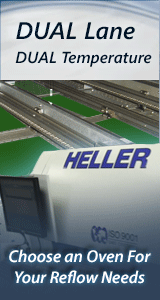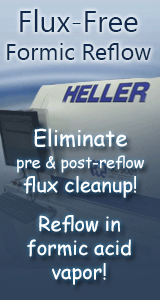Printed Circuit Board Assembly & PCB Design Forum
SMT electronics assembly manufacturing forum.
- SMTnet
- »
- Electronics Forum
- »
- Flux Selection
Flux Selection
![]() Hi,
Can anybody help with a DOE for water soluble flux s...
- Dec 23, 2002
by
Kris
Hi,
Can anybody help with a DOE for water soluble flux s...
- Dec 23, 2002
by
Kris
![]()
![]()
![]() what is DOE?
...
- Dec 23, 2002
by
Steven
what is DOE?
...
- Dec 23, 2002
by
Steven
![]()
![]()
![]() Designed experiments I guess
...
- Dec 23, 2002
by
Designed experiments I guess
...
- Dec 23, 2002
by
![]()
![]() Try:
* Prebake
* Flux density
* Conveyor speed
* Upper p...
- Dec 23, 2002
by
davef
Try:
* Prebake
* Flux density
* Conveyor speed
* Upper p...
- Dec 23, 2002
by
davef
![]()
![]()
![]() Design Of Experiments (DOE). A statistical technique for de...
- Dec 23, 2002
by
davef
Design Of Experiments (DOE). A statistical technique for de...
- Dec 23, 2002
by
davef
![]()
![]()
![]() Thanks guys, now I know what DOE is... I learned something n...
- Dec 24, 2002
by
Steven
Thanks guys, now I know what DOE is... I learned something n...
- Dec 24, 2002
by
Steven
![]()
![]()
![]() Hi
I see DaveF already gave some good stuff.
You shoul...
- Dec 30, 2002
by
Hi
I see DaveF already gave some good stuff.
You shoul...
- Dec 30, 2002
by
![]()
![]()
![]() MA/NY DDave
You say, "I won't list the other publishers ...
- Jan 01, 2003
by
davef
MA/NY DDave
You say, "I won't list the other publishers ...
- Jan 01, 2003
by
davef
![]()
Kris
- SMTnet
- »
- Electronics Forum
- »
- Flux Selection








